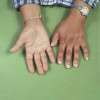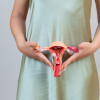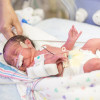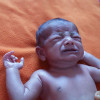
 IJCP Editorial Team
IJCP Editorial Team
Assessment, management, and incidence of neonatal jaundice in healthy neonates cared for in primary care
Jaundice caused by hyperbilirubinemia is common during the neonatal period. Yet there are only a few Population-based studies evaluating assessment, management, and incidence of jaundice and the need for phototherapy among otherwise healthy neonates.
A recent study prospectively explored these aspects in a primary care setting via evaluating care as usual during the control phase of a stepped wedge cluster randomized controlled trial.
The study included a Screening and Treatment to Reduce Severe Hyperbilirubinaemia in Infants in Primary care (STARSHIP) Trial. It included Healthy neonates in seven primary care birth centers (PCBCs) in the Netherlands between July 2018 and March 2020.
Inclusion criteria for neonates were:
- gestational age ≥ 35 weeks,
- PCBC admission record for at least two days during the first week of life
- Not received phototherapy previously.
Outcomes included the visual assessment to detect jaundice, jaundice incidence and management, and the need for phototherapy treatment in the primary care setting.
The results were as follows-
- The study included 860 neonates, of whom 608 (71.9%) were visibly jaundiced at some point during admission to the PCBC, with 20 being 'very yellow'.
- Among the 20 very yellow neonates, four (20%) did not receive total serum bilirubin (TSB) quantification.
- TSB levels did not show an association with the degree of visible jaundice.
- Thirty-one neonates (3.6%) received phototherapy, while none received an exchange transfusion.
- Five neonates did not receive phototherapy despite holding a TSB level above the phototherapy threshold.
This study showed that-
- Jaundice in primary care is common in otherwise healthy neonates.
- Very jaundiced neonates do not always receive TSB quantification
- All neonates do not receive phototherapy when indicated.
Thus, quality improvement initiatives are needed, including alternative approaches to recognizing potentially severe hyperbilirubinemia.
van der Geest BAM, de Mol MJS, Barendse ISA. et al. Assessment, management, and incidence of neonatal jaundice in healthy neonates cared for in primary care: a prospective cohort study. Sci Rep. 2022;12. https://doi.org/10.1038/s41598-022-17933-2

IJCP Editorial Team
Comprising seasoned professionals and experts from the medical field, the IJCP editorial team is dedicated to delivering timely and accurate content and thriving to provide attention-grabbing information for the readers. What sets them apart are their diverse expertise, spanning academia, research, and clinical practice, and their dedication to upholding the highest standards of quality and integrity. With a wealth of experience and a commitment to excellence, the IJCP editorial team strives to provide valuable perspectives, the latest trends, and in-depth analyses across various medical domains, all in a way that keeps you interested and engaged.














Please login to comment on this article